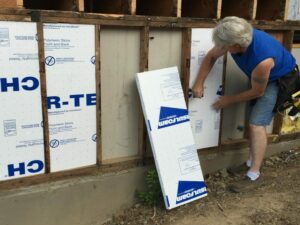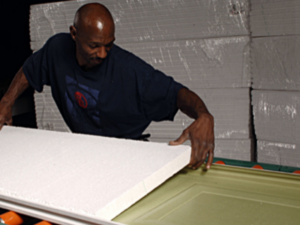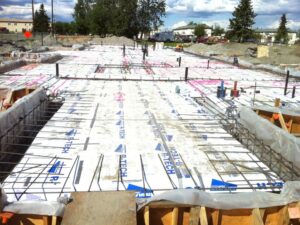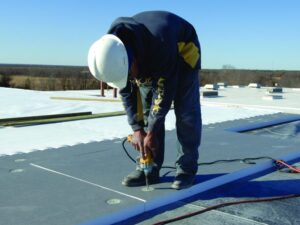Over the past few years, the construction industry has seen its fair share of project delays and material shortages. As with many other building materials, commercial and residential insulation materials have experienced increased demand to meet two distinct pressures: homeowners’ continued interest in home renovation projects and the added insulation requirements of a more stringent iteration of the International Energy Conservation Code (IECC). The increased demand in conjunction with supply chain and manufacturing disruptions have sent material prices through the roof and created exceptionally long lead times for select insulation types.
Currently, polyisocyanurate (polyiso), an insulation product often used in roofing applications, is feeling under pressure. The long lead times of polyiso insulation have forced contractors and DIYers to look for alternative insulation types, such as expanded polystyrene (EPS). A high-caliber insulation solution, EPS foam insulation exhibits several special characteristics, including a high R-value and a moisture-resistant composition, that truly sets it apart from comparable insulation options.
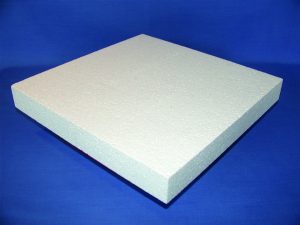 Lead times and availability: Polyiso vs. EPS
Lead times and availability: Polyiso vs. EPS
Some engineering and market experts reported that demand for polyiso in June 2021 was double that of the previous year while its availability had been reduced by nearly half. Not only did this affect lead times and prices for the last six months of 2021, but it is also expected to play out well into 2022. This can cause project delays and budget concerns for both new builds and reroofing projects.
On the other hand, EPS rigid foam insulation has been readily available as a made-to-order insulation. Its made-to-order status in conjunction with its adaptability has allowed it to maintain relatively short lead times and stable prices even as the insulation industry faces increasing pressure from supply chain disruptions. Additionally, EPS foam roofing insulation is available in a variety of shapes and sizes, including: tapered, flute fill and fanfolds. With these options, contractors can insulate a roof using fewer labor hours and with fewer hands, sidestepping project delays and mitigating the skilled labor shortage. EPS foam’s benefits extend beyond the roof to the entire building envelope.
Ability to fit a variety of needs: Polyiso vs. EPS
Polyiso is typically applied to a substrate or facer to form a rigid panel, so all panels are faced. The different facings affect the panel’s durability and permeance rating. For example, foil-faced panels are considered impermeable so they should never be used with an interior vapor barrier. While the different facings can create a polyiso insulation panel better suited for specialized applications, it limits its ability to be a multifunctional insulation solution.
EPS is a versatile rigid insulation, which makes it perfect for general use and a creative solution when more specialized insulation types are scarce. As a multifunctional insulation, EPS rigid foam can be used at ground level, above and below grade without degrading or losing its R-value. The stability of EPS’ R-value stands in stark contrast to other rigid insulations.
R-value stability: Polyiso vs. EPS
Polyiso insulation’s R-value is unstable. As gasses trapped in the cells of polyiso diffuse out, the material loses its R-value. Furthermore, in lower temperatures, this insulation’s performance decreases, which means it may not perform as intended in colder locations.
EPS rigid foam, on the other hand, has a stable R-value throughout its life-cycle, no matter the temperature. Its stable R-value is one of the many considerations, according to the EPS Association, that allow EPS to return up to 200 times the amount of energy required to produce it and reduce emissions by 100 times the volume produced during the manufacturing process. This makes it not just an available and multifunctional insulation solution but also one that supports green building initiatives.
EPS: a creative solution for an ongoing issue
EPS rigid foam sports the highest R-value per dollar of any insulation. It is also readily available and can adapt to fit most applications. As scarcity forces building professionals and DIYers to use insulation materials they may not have used in the past, EPS is proving again and again that its advantages extend beyond short lead times and stable prices.
For more information about how the different types of rigid foam insulation compare check out: www.insulfoam.com/rigid-foam-insulation-types

